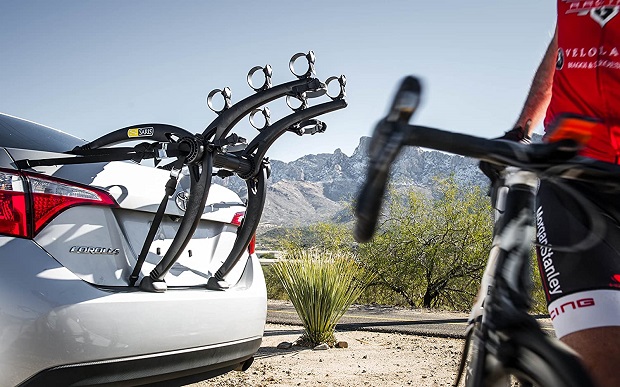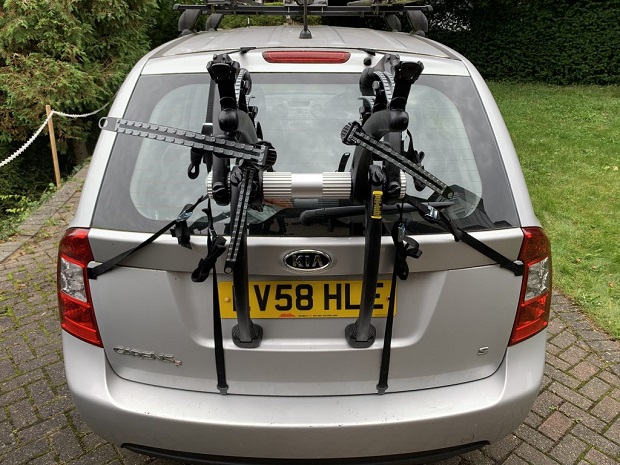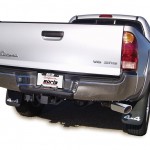Contents

Going on a biking trip far away from home can seem like too big of a challenge, especially for beginners. If you can’t ride your bicycle to the place where the trip actually starts, or you want to have the energy to complete the whole trip, then consider driving to the location. But what about the bicycle? Well, this is where you should consider bike carriers. These accessories are made so that you’re able to transport your bikes with your vehicle. A bicycle carrier not only saves your calves from all that cycling but also makes for an easy and convenient mounting space for your bicycle or bicycles. You also ensure there’s enough space for friends to join in on the fun and that the bicycle itself is safe from scrapes or from getting tangled up with another bicycle. This is guaranteed if you know what to look for in bicycle carriers.
Are Bike Carriers Safe?

Bike carriers may seem like a piece of unsafe racking system but in fact, it’s the exact opposite. No matter which type of bike rack you go for, your two-wheeler will stay put. This is because every type of bicycle carrier for cars has a type of locking system that prevents the bicycles from moving or swaying.
Do Bike Carriers Scratch Car?

While not usually the case, if you go with a boot-mounted bike carrier the chances of the carrier scratching your vehicle are the highest. This is because the carrier sits against the vehicle’s paint strapped to the edge of the boot. To avoid this you need to pick the right carrier just as you would pick the right biking helmet or other biking gear.
What Bike Carrier Fits My Car?

Boot
The ones we already mentioned, boot carriers, or also known as rear bike carriers, are really good for three things. Storing boot carriers is done quite easily as they are typically made to fit in the boot and they are also easier to lift as well. Boot bike carriers can fit on any type of vehicle as they have a mechanism that lets them adapt to any kind of boot.
Roof
While roof carriers can be complicated to install they are one of the most convenient when it comes to storing multiple bicycles. They can hold the most amount of equipment thanks to accessories that allow you to store additional cargo alongside what can hold up to 4 bicycles. You install a roof carrier on a van that can hold up to 7 bicycles. The main disadvantage of these carriers is tunnels and installation as both can be quite a deal breaker and hard to find a workaround for.
Trailer
With a trailer ball bicycle carrier for cars, you can mount bicycles very easily and open the tailgate without any issues. While a trailer carrier has the least number of advantages it also has the least number of disadvantages as it only requires you to mount a tow ball in order for it to work. If you already have one you only need to mount the carrier and you’re good to go.
Hitch
A hitch carrier is just a trailer rack with more storage capacity. If you want a carrier that will work with the tow ball on your vehicle and offers the capacity of a roof carrier you should consider getting a hitch carrier. This type of bicycle carrier comes in the form of a platform that can rack up from two to five bicycles.
How to Mount Bike Rack on Car

1. The first step to installing bicycle carriers, in general, is to open the rack into an arc shape. This shape can vary with each model and type of vehicle you have. On bigger vehicles, one end of the carrier mounts to the rear window and the other end to the bottom of the boot.
2. Next, you should put on a set of clips that split apart the boot from the rack. The clips are installed in a spot where they are easy to put in. Once that’s done, strengthen the straps of the carrier so it sits securely on your vehicle. Test both the straps and clips by moving the carrier from side to side. If it feels loose tighten everything cone again.
3. With your bicycle(s) on the carrier, lock the arms of the carrier and clamp the arms down on the frame. This last step can vary on the model of your vehicle and bicycle carrier too. Make sure the strap is tightened down on the frame and both arms are fastened so the bicycle is not moving.
4. Again, test whether the bicycle is secured in place by shaking it a little bit. If it feels loose, retighten the arms and straps and check once more. Once everything feels safe and secure you can enjoy driving your car and riding your bicycle later on without any worries about both of them.





Comments are closed.